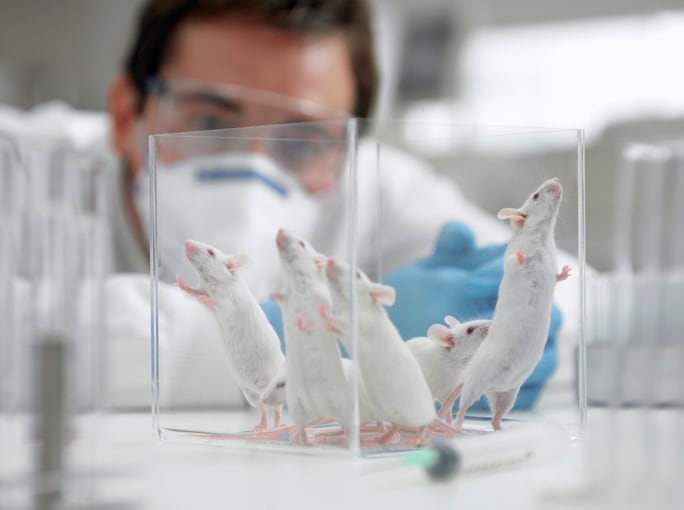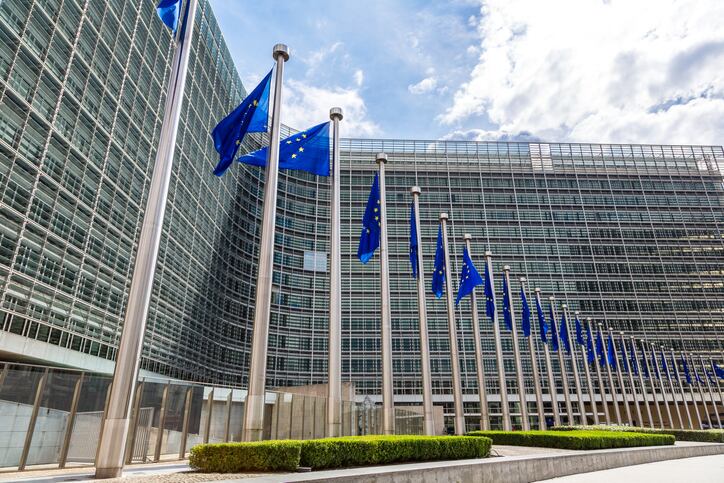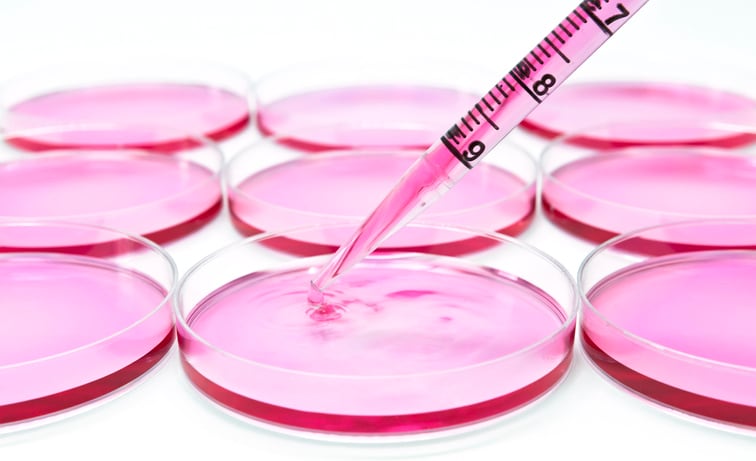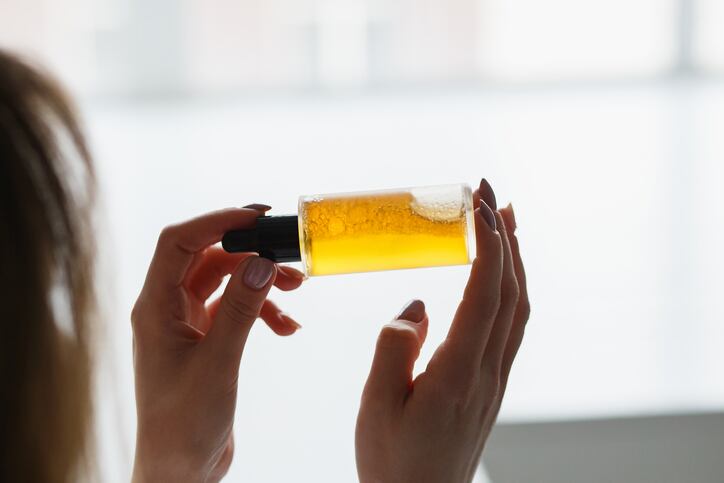Published in Alternatives to Animal Testing (ALTEX), researchers from the Transatlantic Think-Tank for Toxicology t4 – established by the Swiss-headquartered animal-free research advocacy Doerenkamp Zbinden Foundation – investigated dossiers filed under the European Chemical Agency’s (ECHA) Registration, Evaluation, Authorization and Restriction of Chemicals (REACH) database that listed chemicals with a cosmetics use.
Cosmetic-only ingredients with in vivo testing under REACH
The study identified 3,206 chemical dossiers in REACH containing ingredients with cosmetics as a reported use, 419 of which listed cosmetics as the only use. Of these 419 dossiers, the researchers found 63 had completed in vivo tests after the Cosmetics Regulation ban on in vivo testing.
Animal testing on all cosmetic products and cosmetic ingredients was banned under EU law in 2013 through the EU Cosmetics Regulation 1223/2009. Prior to that, there had been an initial ban on testing for certain endpoints in finished products put in place in 2004 and for ingredients in 2009.
However, under ECHA’s REACH regulation 1907/2006, certain aspects required or enabled animal testing – notably testing for environmental endpoints like aquatic toxicity, the first-time registration of some new chemical substances and long-term worker safety. And it was under REACH that the post-ban animal tests had been conducted on cosmetic-only ingredients, the researchers said.
“Registrants largely used alternative, non-animal methods to evaluate ingredients for REACH, but some still conducted new in vivo tests to comply with REACH requirements for toxicity data and worker safety assessments,” they wrote.
“In some cases, ECHA, the agency that evaluates REACH dossiers, rejected registrants’ alternative methods as insufficient and required new in vivo tests.”
‘Conflict between REACH and the Cosmetic Regulation’
The researchers, made up of representatives from the Center for Alternatives to Animal Testing CAAT and its European arm; the University of Konstanz in Germany; Johns Hopkins University in the US; China-based regulatory compliance firm Knudsen & CRC; US cruelty-free beauty brand White Rabbit Beauty; and international ingredient major Clariant, concluded: “EU cosmetic ingredients are governed by two regulations that conflict.”
“…The conflict between REACH and the Cosmetic Regulation poses a serious dilemma for all segments of the cosmetic industry,” the researchers said – for ingredients manufacturers, cosmetic brands and consumers, alike.
“For ingredient manufacturers, as they can be legally required under REACH to conduct in vivo test on their ingredients, but the cosmetic market may reject ingredients with such tests; for cosmetic brands, as they cannot easily identify REACH testing of ingredients in their supply chain, but if such testing is identified, a brand risks backlash from consumers if it continues to use the ingredient, but finding an alternative can be difficult and costly; and for consumers, as they can no longer have confidence that the EU cosmetic products they purchase were not tested on animals.”
The results of the present study analysing REACH dossiers, they said, gave “cause for both optimism and concern”.
In vitro versus in vivo - many animal tests 'could have been waived'
“The review of the dossiers of cosmetic-only ingredients shows in vivo testing declined steeply after 2009, when the initial cosmetic testing ban took effect. However, the testing did not end then or in 2013 when the final ban came into effect. The trends show continued in vivo testing of cosmetic-only ingredients for REACH, and this is likely to carry on as ECHA continues to evaluate REACH registration dossiers.”
The study identified that new in vivo testing post-ban was “largely performed because they were required by REACH”, despite many dossiers exclusively using alternatives, particularly for human health endpoints.
“For health endpoints with available in vitro methods, most registrants who reported in vivo tests had followed the REACH principle of in vitro first, but ultimately had to test in vivo to comply with REACH. Key reasons were positive or equivocal results from in vitro tests or chemical properties that made in vitro tests infeasible.”
However, the researchers said some of these tests “could have been waived” by applying the possibilities listed in REACH Annex XI or using non-animal alternatives, particularly around acute toxicity.
‘More new in vivo testing for REACH is likely’
The researchers emphasised the importance on making such testing public knowledge, stating in vivo testing of cosmetic-only ingredients for REACH had “not previously come to attention” because the EU no longer tracked in vivo tests on cosmetic ingredients. The EU’s status report, they said, instead counted all REACH test as ‘industrial chemicals legislation’ tests, including those on cosmetic ingredients.
“More new in vivo testing for REACH is likely. As part of its dossier review process to date, ECHA has already requested new in vivo tests for cosmetic-only substances, and more requests can be expected as ECHA identifies data gaps in the dossiers. Also, ECHA’s decision that in vivo testing may be performed on cosmetic-only ingredients ‘to assess the risks from exposure to workers’ affects mots ingredients. Except for import of a finished cosmetic product, all other cosmetic processes involve worker exposure to the cosmetic ingredient,” the researchers said.
Considering this, they said “greater transparency” on post-ban in vivo testing was needed, as well as an “engaged effort by stakeholders to resolve the conflict”.
And such efforts had certainly already kickstarted in earnest.
Beauty industry calls out ECHA and REACH animal testing
Back in November 2020, industry majors including Procter & Gamble, L’Oréal, Unilever and Avon signed an open statement issued by the Human Society International’s Animal-free Safety Assessment Collaboration (AFSA) claiming ECHA and its Board of Appeal was undermining the EU animal testing ban on cosmetics.
In December 2020, 400+ beauty companies and brands also signed an open letter addressed to the European Commission, Parliament and Council calling for new animal testing to be stopped, in adherence to the existing EU animal testing ban. Signatories of this letter included Avon, Dermalogica, Molton Brown, Natura &Co and Unilever, along with a number of non-profits, including PETA, Cruelty Free International and Human Society International.
And this year, industry association Cosmetics Europe unveiled its latest project: the animal-free safety assessment New Science Programme, set to launch in 2022 and designed to drive forward non-animal safety assessment capabilities, regulatory use of these alternatives and education and training across industry. The five-year programme would be industry-led and operate globally to ultimately create a global future where cosmetics was free from animal testing entirely.
Source: Alternatives to Animal Testing (ALTEX)
Published online ahead of print August 2021, doi: 10.14573/altex.2104221
Title: “Continuing animal tests on cosmetic ingredients for REACH in the EU”
Authors: J. Knight, C. Rovida, R. Kreiling, C. Zhu, M. Knudsen and T. Hartung




